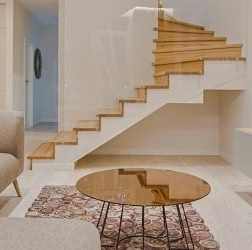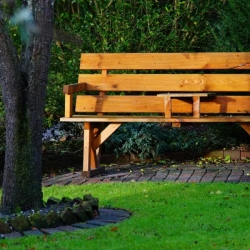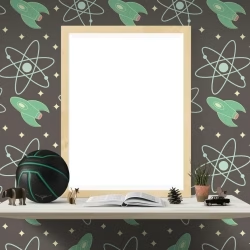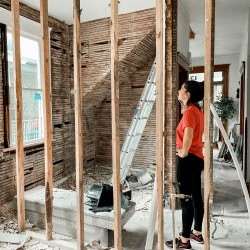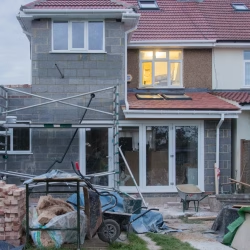Expert Interior Decorating Tips
Are you ready to breathe new life into your South Wales home? Get ready to unlock the secrets of professional interior decorators and transform your living spaces into stunning havens that reflect your unique style.
In this guide, we’ll reveal 10 expert tips that will revolutionize your approach to interior decorating. From mastering the art of colour to creating eye-catching focal points, we’ve got you covered.
Whether you’re a DIY enthusiast or considering professional help, these insights will empower you to:
• Maximize natural light and make small spaces feel larger
• Mix patterns and textures like a pro
• Incorporate statement pieces that wow
• Balance open-plan living areas effortlessly
• Add personal touches that tell your story
Ready to embark on your home transformation journey? Let’s dive in and discover how to turn your South Wales residence into a magazine-worthy masterpiece!
Understanding Interior Decorating
Interior decorating in South Wales is more than just making a space look pretty. It’s about creating a harmonious environment that reflects your personality and meets your needs.
South Wales, with its rich history and stunning landscapes, offers unique inspiration for interior design. From the rugged coastlines to the lush valleys, there’s no shortage of natural beauty to draw from.
When you step into a well-decorated Welsh home, you might find a blend of traditional and modern elements. Picture a cosy living room with a plush sofa facing a sleek fireplace or a kitchen that combines rustic wooden beams with state-of-the-art appliances.
Professional interior designers in South Wales understand the local aesthetic. They know how to balance the area’s cultural heritage with contemporary trends, creating spaces that are both timeless and fresh.
But interior design isn’t just about aesthetics. It’s about functionality too. A good interior designer will consider how you use each room, ensuring that the space not only looks good but works well for your lifestyle.
Whether you’re renovating a Victorian terrace in Cardiff or decorating a modern apartment in Swansea, understanding the principles of interior decorating can help you create a space you’ll love.
Key Takeaways: Interior decorating in South Wales blends local heritage with modern design, creating functional and beautiful spaces that reflect personal style and the region’s unique character.
The Importance of a Customer-Centric Approach
When it comes to interior design, a customer-centric approach is not just important – it’s essential. This approach puts you, the homeowner, at the heart of the design process.
Imagine walking into your newly decorated living room and feeling instantly at home. That’s the power of a customer-centric approach.
A professional interior designer who values this approach will:
– Listen to your ideas and preferences
– Consider your lifestyle and needs
– Work within your budget
– Communicate clearly throughout the process
Here’s an interior design secret: the best designs come from a deep understanding of the client. It’s not about following trends blindly, but about creating a space that truly reflects you.
For example, if you love to entertain, your designer might suggest an open-plan living area with plenty of seating. If you work from home, they might create a cosy, productive office nook.
Key Takeaways: A customer-centric approach in interior design ensures that your space not only looks beautiful but also perfectly suits your lifestyle and preferences.
Essential Interior Painting Services
Interior painting services are the backbone of any home transformation. They can breathe new life into tired spaces and set the tone for your entire decor scheme.
Walls: The Canvas of Your Home
Your walls are like a blank canvas, ready to be transformed. A fresh coat of paint can dramatically change the feel of a room. For instance, painting your living room in a warm, earthy tone can create a cosy, inviting atmosphere.
Doors: First Impressions Matter
Don’t overlook your doors! Painting interior doors can add character to your home. Imagine a pop of colour on your bedroom door or a sleek, glossy finish on your kitchen pantry door.
Ceilings: The Forgotten Surface
Ceilings are often neglected, but they play a crucial role in interior design. A white ceiling can make a room feel larger, while a darker shade can create intimacy in a large space.
Windows: Framing Your View
Window frames deserve attention too. Freshly painted frames can enhance your view and complement your overall colour scheme. Picture crisp white frames against a bold wall color, or dark frames for a modern, industrial look.
When choosing interior painting services, consider:
– The quality of paint used
– The skill of the painters
– The preparation process
– The clean-up afterwards
Remember, good interior painting isn’t just about colour. It’s about creating the right finish, whether that’s matte for a sophisticated look or high gloss for a more dramatic effect.
Key Takeaways: Comprehensive interior painting services, covering walls, doors, ceilings, and windows, are essential for a cohesive and refreshed home aesthetic.
Protecting Your Belongings During Decorating
When you’re giving your home a makeover, protecting your belongings is crucial. After all, you don’t want your favourite armchair splattered with paint or your heirloom rug covered in dust.
Here’s how professional decorators ensure furniture and carpet protection:
– Use high-quality dust sheets to cover large items
– Employ specialized wrapping for delicate pieces
– Remove smaller items from the room entirely
Many decorating services offer a complimentary furniture moving service. This means they’ll carefully relocate your items before starting work and return them once the job is done.
Imagine coming home to find your newly painted living room perfectly arranged, just as you left it – but better! That’s the peace of mind a good decorating service provides.
Remember, protecting your belongings isn’t just about avoiding damage. It’s about ensuring you can enjoy your new decor without the stress of cleanup or repairs.
Key Takeaways: Professional decorators prioritize the protection of your belongings, often offering furniture moving services to ensure a worry-free renovation experience.
Finding Your Personal Style
Discovering your personal interior design style is like embarking on a journey of self-expression. It’s about creating a space that feels uniquely you.
Start by creating a mood board. This can be a physical board or a digital collection of images that inspire you. Include colours, textures, furniture styles, and anything else that catches your eye.
Next, consider your colour palette. Do you gravitate towards warm, earthy tones or cool, calming hues? Your colour scheme sets the foundation for your entire design.
Here’s a quick exercise to help you find your style:
1. Look at your wardrobe. The colours and styles you wear often reflect your design preferences.
2. Think about your favourite places. Do you feel most at home in a cosy cabin or a sleek city loft?
3. Consider your lifestyle. A minimalist design might suit a busy professional, while a family-friendly home might need more storage and durable materials.
Remember, your style can be a mix of different influences. You might love the clean lines of modern design but also appreciate vintage accents.
Don’t be afraid to experiment! Try out different colour combinations or furniture arrangements. Your home should evolve with you, reflecting your changing tastes and experiences.
Key Takeaways: Finding your personal style involves exploring your preferences through mood boards, color palettes, and self-reflection, allowing your home to become a true reflection of you.
10 Expert Interior Decorating Tips
1. Embrace Natural Light
Natural light is a game-changer in interior design. It can make spaces feel larger, brighter, and more inviting. To maximize natural light:
– Use sheer curtains to allow light in while maintaining privacy
– Place mirrors strategically to reflect light around the room
– Choose light, reflective colours for walls and ceilings
Consider different lighting options for when natural light is scarce. Layered lighting, combining ambient, task, and accent lights, can create a warm and welcoming atmosphere. For example, combine overhead lights with table lamps and wall sconces for a cozy living room.
2. Master the Art of Color
Understanding the intricacies of the colour wheel can transform your space. Here’s a quick guide:
– Complementary colours (opposite on the wheel) create bold contrasts
– Analogous colours (next to each other) create harmony
– Triadic colours (evenly spaced) offer balanced contrast
Experiment with your colour palette. Try painting one wall in a bold hue as an accent, or use colourful accessories to add pops of colour to a neutral base.
Remember, colours can affect mood. Blues and greens are calming, while reds and oranges are energizing. Choose wisely for each room’s purpose.
3. Optimize Small Spaces
Don’t let a smaller space limit your design dreams. Here are some tricks to make it feel larger:
– Use multi-functional furniture, like an ottoman with storage
– Opt for light colours to create an airy feel
– Incorporate vertical storage to maximize floor space
Consider a Murphy bed in a guest room/office combo, or a fold-down table in a compact kitchen. Mirrors can also create the illusion of more space.
Remember, in a small space, every inch counts. Be intentional with your choices and avoid clutter. A well-organized small room can feel more spacious than a cluttered large one.
4. Mix Patterns and Textures
The precise use of patterns can add depth and interest to your space. Here’s how to mix patterns like a pro:
– Vary the scale of patterns (large, medium, small)
– Use a consistent colour palette to tie different patterns together
– Balance bold patterns with solid colours
Don’t forget the textures! Combine smooth surfaces with rough ones, or soft fabrics with hard materials. For example, pair a sleek leather sofa with a fluffy wool rug and patterned throw pillows.
Remember, the key is balance. Too many competing patterns can overwhelm a space, while too few can make it feel flat.
5. Incorporate Statement Pieces
Statement pieces can elevate your interior from ordinary to extraordinary. These could be:
– A vintage chandelier found at a flea market
– A bold piece of art from the high street
– An unusually shaped piece of furniture
For instance, imagine a minimalist living room with a vibrant, oversized abstract painting as the focal point. Or a sleek, modern kitchen with a rustic farmhouse table as the centrepiece.
When choosing statement pieces, consider scale and proportion. A large room can handle bigger, bolder items, while smaller spaces might benefit from more subtle standouts.
6. Create Focal Points
Every room needs a focal point – a fabulous feature that draws the eye. This could be:
– A fireplace in the living room
– A striking bedroom wallpaper behind the headboard
– An eye-catching backsplash in the kitchen
For example, in a dining room, a large, dramatic light fixture above the table can serve as a stunning focal point.
Once you’ve established your focal point, arrange furniture and decor to complement it. This creates a sense of purpose and organization in the room, guiding the eye and creating a cohesive look.
7. Balance Open-Plan Living
Open-plan living rooms are popular, but they can be challenging to decorate. Here’s how to create distinct zones while maintaining flow:
– Use area rugs to define spaces
– Position furniture to create natural divisions
– Use colour to differentiate areas
For instance, in an open-plan kitchen/living area, you might use a large rug to anchor the living room furniture, while keeping the kitchen area rug-free. Use consistent colours or materials to ensure the next room feels connected to the space.
8. Use Clever Storage Solutions
Good use of storage can make or break a room’s design. Consider these types of storage:
– Built-in shelving for a streamlined look
– Ottomans with hidden storage for dual functionality
– Under-bed storage for maximizing bedroom space
Get creative! A coffee table with drawers can hide remote controls and magazines. In a small bathroom, a ladder shelf over the toilet can provide extra storage without taking up floor space.
Remember, the goal is to have a place for everything. This allows you to display your favourite items while keeping clutter at bay.
9. Add Personal Touches
Your home should tell your story. As an interior design enthusiast or DIY genius, you can:
– Display travel souvenirs or family heirlooms
– Create a gallery wall with personal photos
– Showcase your hobbies (like a guitar on the wall for music lovers)
For example, frame your child’s artwork for a colourful and meaningful kitchen display. Or create a cosy reading nook with your favourite books and a cherished throw blanket.
These personal elements make your space unique and inviting, reflecting your personality and experiences.
10. Consider Professional Expertise
While DIY can be rewarding, sometimes it’s worth consulting a professional interior designer. They can:
– Offer fresh perspectives on your space
– Navigate complex design challenges
– Access resources not available to the public
An interior design expert can help you avoid costly mistakes and achieve a polished look. They might suggest ideas you hadn’t considered, like a particular colour combination or furniture arrangement that perfectly suits your space.
Remember, you can still maintain your personal style while benefiting from professional guidance. The best designers work with your vision, not against it.
Key Takeaways: These ten expert tips cover a range of interior design aspects, from maximizing light and space to personalizing your home, providing a comprehensive guide for transforming your living spaces.
Transforming Different Rooms
Living Room Makeover
Your living room is often the heart of your home. Here’s how to make it shine:
– Create conversation areas with thoughtful furniture placement
– Add layers of lighting for ambience
– Incorporate texture through throws, pillows, and rugs
For an open-plan living room, use area rugs and furniture placement to define spaces. A large sectional sofa can create a cozy TV area, while a pair of armchairs by a window can form a reading nook.
Don’t forget the walls! A gallery wall of family photos or a large piece of art can add personality. Remember, your living room should reflect your lifestyle, whether that’s formal entertaining or casual family time.
Bedroom Bliss
Transform your bedroom into a serene retreat:
– Choose a calming colour palette
– Invest in quality bedding for comfort and style
– Create a focal point with a statement headboard
For a bold look, consider a bedroom black accent wall. Pair it with light bedding and metallic accents for drama. Or, for a softer feel, try russet leaf print bed linen against neutral walls.
Lighting is crucial in bedrooms. Layer your lighting with bedside lamps, overhead lights, and even string lights for a cozy atmosphere. Don’t forget blackout curtains for better sleep!
Remember, your bedroom should be a personal sanctuary that promotes relaxation and rejuvenation.
Bathroom Brilliance
Even small bathrooms can make a big impact:
– Use large mirrors to create the illusion of space
– Opt for a tonal wall panel for a spa-like feel
– Add luxurious touches like plush towels and scented candles
For a luxury hotel vibe, consider a rainfall showerhead and high-end fixtures. Or, for a more eclectic look, mix vintage elements like a clawfoot tub with modern accessories.
Storage is key in bathrooms. Use vertical space with tall cabinets or shelving units. A ladder shelf can add both storage and style.
Don’t shy away from bold choices in small spaces – a dramatic wallpaper or vibrant tile can turn a tiny powder room into a showstopper.
Key Takeaways: Each room in your home presents unique opportunities for transformation, from creating a welcoming living room to designing a serene bedroom and a luxurious bathroom.
Incorporating Trends While Maintaining Timeless Appeal
Staying current with interior design trends can be exciting, but it’s important to balance trendiness with timeless appeal. Here’s how:
1. Choose classic base pieces: Invest in neutral, well-made furniture that can adapt to changing trends.
2. Use trends in accents: Incorporate trendy colours or patterns in easily changeable items like throw pillows, area rugs, or wall art.
3. Mix old and new: Combine vintage pieces with modern elements for a curated look that transcends trends.
4. Focus on quality: Well-made items never go out of style.
5. Consider your home’s architecture: Choose designs that complement your home’s inherent style.
Here’s a trade’s best-kept secret: trends often cycle back. That mid-century modern sideboard? It’s both trendy and timeless.
For example, if the current interior design trend is bold, tropical prints, you could incorporate this through curtains or a feature wallpaper. These can be easily changed when trends shift, unlike major furniture pieces.
Remember, your home should reflect your personal style above all. Don’t follow trends that don’t resonate with you. The most timeless interiors are those that authentically represent the homeowner’s taste and lifestyle.
Key Takeaways: Balancing trends with timeless elements creates a home that feels current yet enduring, achieved through strategic incorporation of trendy accents and investment in classic, quality pieces.
The Role of Furniture in Interior Design
Furniture plays a crucial role in interior design, serving both functional and aesthetic purposes. Here are some top pieces of advice:
1. Consider furniture size: Ensure pieces are proportional to your room. Oversized furniture can overwhelm a small space, while tiny pieces can look lost in a large room.
2. Create flow: Arrange furniture to allow easy movement through the space. In a living room, for example, create clear pathways between seating areas.
3. Mix and match: Don’t be afraid to combine different styles. A vintage armchair can look stunning next to a modern sofa.
4. Think about functionality: Choose pieces that suit your lifestyle. If you love to entertain, a large dining table might be essential.
5. Use furniture to define spaces: In open-plan areas, use furniture placement to create distinct zones.
Remember, furniture is more than just functional. It’s an expression of your style and a key element in creating the atmosphere of your home. Whether you prefer sleek, modern pieces or cozy, traditional furnishings, choose items that resonate with you and enhance your space.
**Key
Conclusion
Transforming your South Wales home with expert interior decorating techniques is an exciting journey that allows you to express your unique style and create a space you’ll love. By embracing natural light, mastering colour palettes, and incorporating statement pieces, you can elevate your home’s aesthetic and functionality. Remember, whether you’re working with a small space or an open-plan living room, there’s always room for creativity and personal touches.
Don’t be afraid to mix patterns, experiment with textures, or seek inspiration from flea markets and high street finds. If you feel overwhelmed, consider consulting a professional interior designer who can provide valuable insights and help bring your vision to life.
By applying these expert tips and tricks, you’ll be well on your way to creating a stunning, personalized living space that reflects your personality and meets your needs. So, take that first step today and start transforming your home into the haven you’ve always dreamed of!

